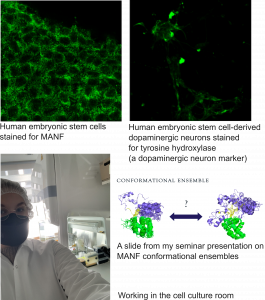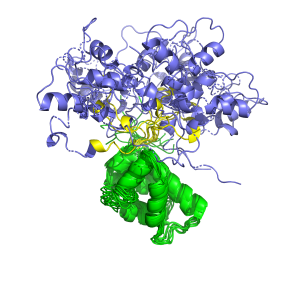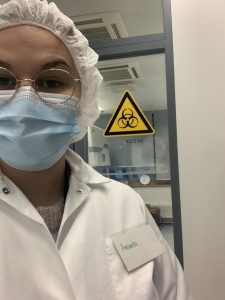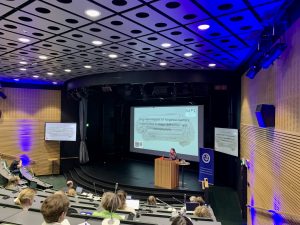Hello everyone! My name is Amanda Sandelin, and I have conducted my traineeship co-supervised by two groups at the University of Helsinki: Mikko Airavaara’s group of BrainRepair and Samuli Ollila’s group of Biophysical Chemistry. If you do not remember what my project was all about, you can refresh your memory here: https://blogs.helsinki.fi/hilife-trainees/2022/07/07/mystery-of-manf/.
My summer as a HiLIFE research trainee
My master’s thesis project is about MANF or mesencephalic astrocyte-derived neurotrophic factor. As I wrote in my previous blog post; MANF is a neurotrophic factor, which has protective effects in various disease models, including Parkinson’s disease. MANF mechanisms of action and function are somewhat of a mystery, so this summer I have been working on resolving the mystery of MANF.
To study the function and structure of MANF, I have been conducting experiments both in vitro and in silico. During my traineeship in Mikko Airavaara’s group I have been working mainly with stem cells. We have a MANF knockout human embryonic stem cell line, which I have been using to study how the loss of MANF affects cellular antioxidant defense. I have also differentiated stem cells into human dopaminergic neurons to study the role of MANF in human dopaminergic neuron development. In Samuli Ollila’s group, we combine molecular dynamics (MD) simulations with nuclear magnetic resonance (NMR) spin relaxation data to study how biomolecules, including proteins, behave. I have been simulating MANF structures in different intracellular conditions using MD simulations and compared the simulations with experimental NMR spin relaxation data to validate the methodology for studying two-domain proteins such as MANF.
During the summer I have done a lot of cell culturing, MD simulations, immunofluorescent staining, biochemical assays and data analysis. I have had the chance to design, conduct, analyze and discuss experiments and, finally, present my work in seminars and at a conference. So, all around a science-filled summer that has resulted in some exciting results coming your way soon!
Thank you!
Did I solve the mystery of MANF? Maybe not yet, but the mission continues, and I have exciting results that I am now compiling in my thesis. The HiLIFE research traineeship made this project possible, and I must thank my supervisors for being open to this collaboration. Thank you to Vassileios Stratoulias, Samuli Ollila and Mikko Airavaara for guiding me as a young researcher and for allowing me to pursue my scientific curiosity. And, of course, a big thank you to HiLIFE for giving me this opportunity to work in an inspiring research environment!
Wishing you a cozy autumn,
Amanda Sandelin





